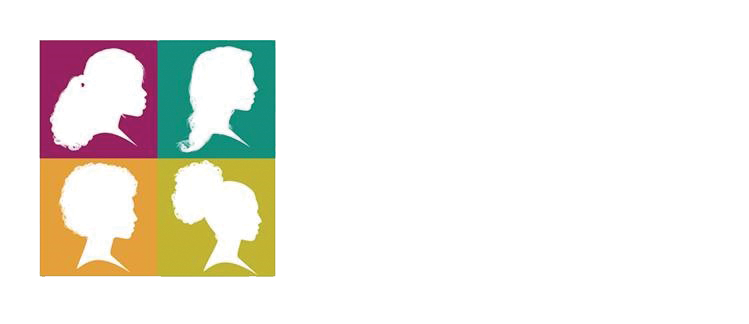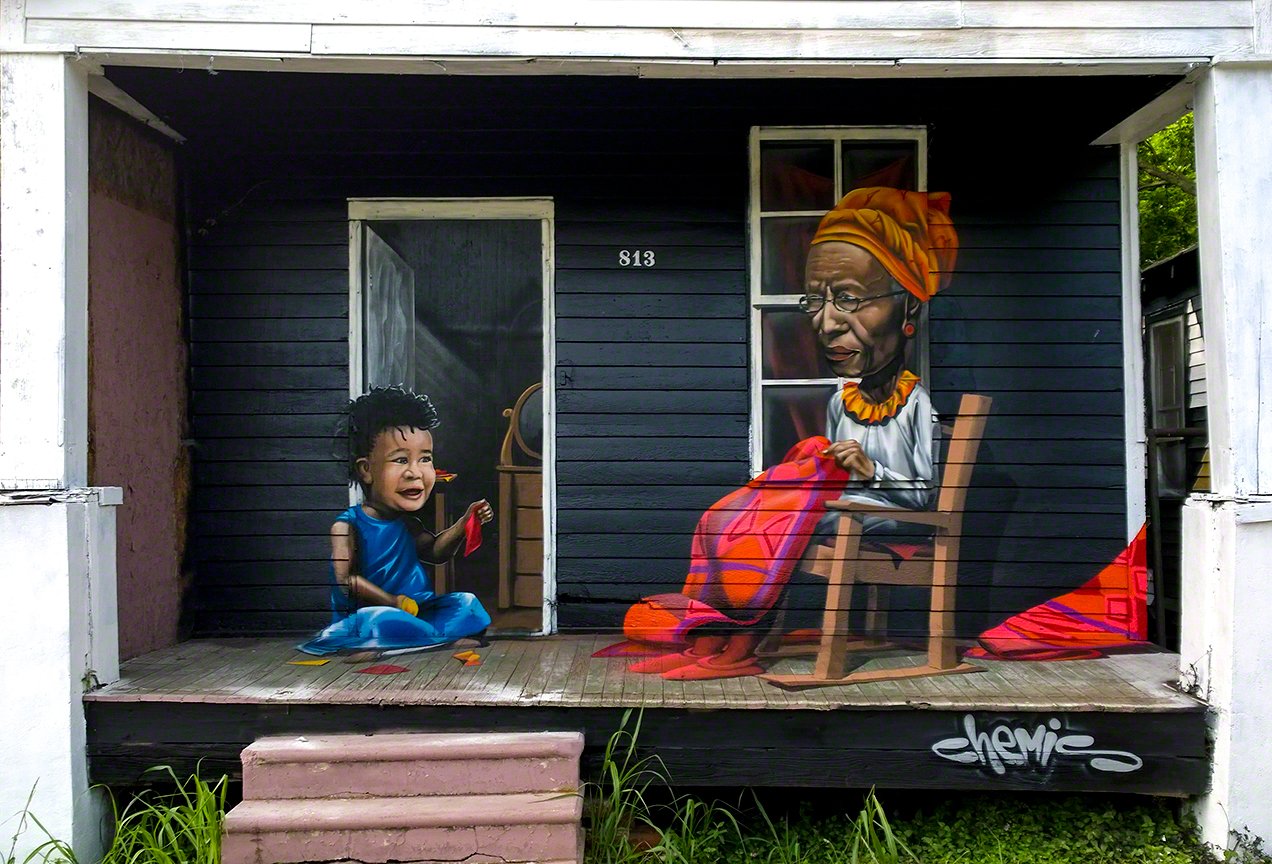Porch Rap Session on Resilience, Post-Katrina, Post-Fire
December 2015
Women With A Vision found a home in a former law office on Broad Street in 2015 after the arson attack forced us out of our offices for three years. The offices on Broad once again served as a sanctuary for our clients and our team, a place where we cared for each other and dreamt of a world otherwise. The office’s front porch, overlooking the rapidly gentrifying Broad Street corridor, was a place where we welcomed our community and continued to weave together Women With A Vision’s theory on the ground.
Shaquita Borden, Mwende Katwiwa, Deon Haywood, Nakita Shavers, Laura McTighe, and Nia Weeks sitting on WWAV’s front porch at 1226 N. Broad Street in New Orleans, Louisiana, December 16, 2015.
We reflected on what it meant to have been placeless all those years. “Resilience” was on everyone’s lips around the tenth anniversary of Hurricane Katrina—from the politicians who were trying to excuse their incompetent responses after the storm, to the developers who had bulldozed housing projects to make ways for a new, whiter New Orleans. It seemed like everyone wanted to talk about how we have “overcome,” but no one was ready to talk about the systems of oppression that made such “resilience” necessary. And so we decided to do what WWAV does: we came together to talk it out.
Front porch of a home in the Mural House Program, Old South Baton Rouge, Louisiana. Photo courtesy of Museum of Public Art
In a conversation in December of 2015 the WWAV team named how it was the same tactics from the racial capitalism playbook (isolation, blame, criminalize, destabilize, erase, and take) that were responsible for the destruction and displacement in post Hurricane Katrina and for the uninvestigated arson attack on Women With A Vision’s offices.
On that front porch, the WWAV team refused to accept the displacement of our communities through the creation of the gentrified “new New Orleans.” We used our speech to tell of the realities of racial capitalism’s terrors on both the macro and micro levels, and we spoke of a world otherwise as we dreamt of a New Orleans “for young Black girls like me, who come from the ‘hood, come from the Lower Ninth Ward-hood that has been taken away.”
“So really thinking of these two horrors that happened to WWAV that we had to survive. Both of them are man-made. [Hurricane Katrina’s aftermath and the arson attack] were the result of white supremacy, patriarchy, and bigotry. So the system that failed us here in this city, that didn’t care about poor people, that didn’t care about poor Black people, that resulted in thousands of people dying, that resulted in thousands less Black people in the city of New Orleans that before Katrina, that didn’t care about those people ever coming back, that is recreating a city that is really about white professionals, that is recreating communities and environments to cater to people who are not about the people who are born and raised here. That same system is what fed this person who came and burned down WWAV because of the work and the people WWAV was speaking for. And so we gotta understand that these twin traumas are basically children of the same system. And so how do we really think about our own survival in the context of that? Why should we have to keep having to survive? We should be able to live and thrive, and not just survive. ”




